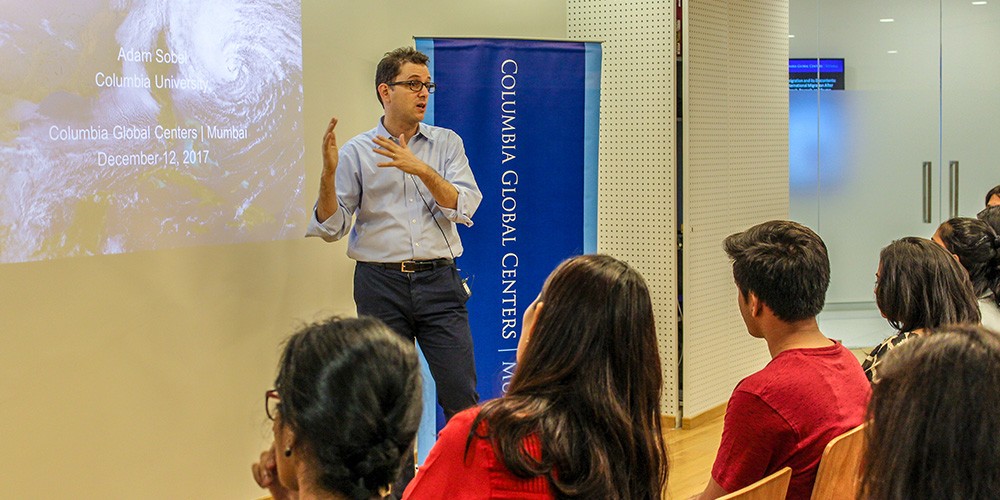Preparing for Storm Surge in New York and Mumbai

When a team of researchers from Columbia University set out in January 2017 to study the risk of cyclones to the city of Mumbai, the likelihood of the city experiencing a phenomenon that had never occurred seemed remote. When their lead researcher returned in December 2017, Cyclone Ockhi had narrowly passed the city’s coastline, increasing the significance of their work.
With a view to bringing research on urban climactic hazards into the public domain, Columbia Global Centers | Mumbai hosted a public lecture, ‘New York after Hurricane Sandy and the Future of Urban Floods’ on December 12, 2017 by Dr. Adam Sobel, Professor in the Departments of Applied Physics and Applied Mathematics, and Earth and Environmental Sciences, who directs the Initiative on Extreme Weather and Climate at Columbia University. Professor Sobel shared anecdotes from his book, Storm Surge: Hurricane Sandy, Our Changing Climate, and Extreme Weather of the Past and Future. His lecture also highlighted the preliminary findings of an ongoing research project on the risk of a tropical cyclone-driven storm surge to the city of Mumbai, a project in collaboration with Columbia Global Centers | Mumbai. A storm surge is when strong storm winds cause the level of sea water to rise and push the sea water onto land.
“The likelihood of Sandy hitting New York was a once-in-a-couple-of-hundred-year event, but it occurred. Mumbai is where New York was and our experience shows us not to be complacent. Historically, the biggest losses due to disasters are dominated by a few big, rare events,” said Professor Sobel. He elaborated that New York agencies had forecasted Sandy well, nearly five days in advance, which allowed for a set of proactive preparations by city, state and federal government agencies. These included the evacuation of people in the lowest-lying areas, the shutdown of transit systems (subways and buses), and pre-emptive partial power shutdowns. Yet, they failed to evacuate nursing homes and adult care facilities. The toll was an estimated 117 deaths and around $50 billion to $65 billion in economic damages. This despite the fact that for nearly two decades before Sandy, various agencies had been commissioning expert reports on the risk from hurricanes.
Professor Sobel’s team is in the process of developing a forecast model for the city of Mumbai to predict how future storms in the Arabian Sea might manifest. “Mumbai, a coastal city like New York, is much more vulnerable as it is flatter and has more land reclaimed from the sea,” said Professor Sobel. Studies show that global warming has increased the probability of cyclones in the Arabian ocean and while cyclones mostly tend to go west to the Arabian Peninsula or north to Gujarat, Mumbai must brace for a rare scenario when the cyclone veers from its usual path, as Sandy did resulting in a landfall in New York. Preliminary research by Professor Sobel and his team shows that a very high intensity cyclone (greater than 100 knots) is a rare event, but not impossible. “Such a storm could generate a high storm surge which raises concerns about flooding,” he said.
The lecture delivered to a packed hall was widely captured in the media with articles printed in leading publications including The Times of India and Scroll.in and served as a timely wake-up call to city agencies, citizens and other stakeholders on the need to build systemic responses and resilience to such disasters.